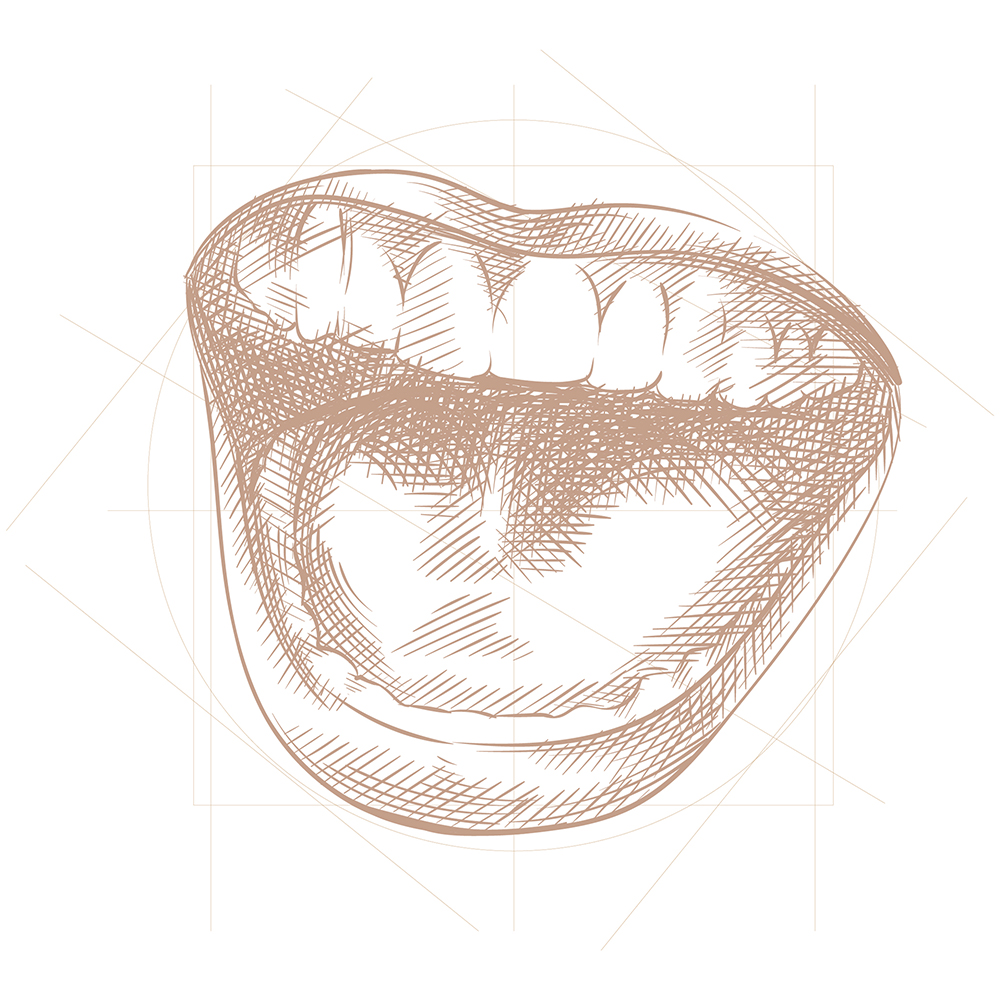Teeth Whitening Treatment
Teeth whitening is an aesthetic dental procedure that restores the natural whiteness of teeth lost over time and eliminates stains and discolouration. Today, this method, which is frequently preferred by those who want to have a visually attractive smile and increase self-confidence, offers a healthier and more vibrant appearance by targeting stubborn stains on tooth enamel. Teeth whitening can be performed by dentists in a professional clinic or with practical solutions that can be applied at home. So, what exactly is teeth whitening, how is it applied and what should be considered? Here are all the details:
What is Teeth Whitening and Why is it Necessary?
Teeth whitening is a cosmetic procedure to remove yellow, brown or grey discolouration on the surface of the teeth. These discolourations are usually caused by daily habits: Coloured drinks such as coffee, tea, cola, cigarettes, red wine, some spices or thinning of the enamel with age can trigger this condition. In addition, genetic predisposition or certain medications used in the past (for example tetracycline) can also leave permanent stains on the teeth. Teeth whitening solves these problems, allowing the teeth to return to their natural tone and helps to achieve an aesthetic smile. However, it should be noted that it is not effective on artificial surfaces such as veneers, fillings or prostheses.
Teeth Whitening Methods: Which Option is Right for You?
Teeth whitening is divided into two basic categories according to the method of application: professional whitening in a clinical setting and individual whitening at home. Both methods have their own advantages and processes.
- Professional Clinic Whitening (Office Whitening)
- This method applied by dentists is ideal for those looking for fast and striking results. Thanks to the powerful whitening agents and technological devices used in the clinic, the teeth whiten significantly in a short time.
- Home Whitening (Personal Whitening)
It is applied at home with special kits provided by the dentist. It requires a longer process, but costs less and offers flexibility to the user. In this method, individually prepared trays and low-dose whitening gels are used.
How Does the Teeth Whitening Process Work?
How is Clinical Whitening Performed?
- First Step: The dentist examines your teeth and checks for problems such as decay, gum disease or sensitivity. Then he prepares the tooth surface with a professional cleaning.
- Protection Phase: The gums and soft tissues are coated with a special gel or barrier so that they are not affected by the bleaching agents.
- Whitening: A highly concentrated bleaching agent (usually hydrogen peroxide based) is applied to the teeth. This substance is activated by a laser, LED light or UV device to dissolve the stains.
- Completion: The procedure usually takes between 45 minutes and 1 hour. Visible whitening is achieved in one session, but additional appointments may be required depending on the desired result.
How to Whiten at Home?
- Preparation: The dentist takes impressions to prepare a clear aligner that fits your teeth perfectly.
- Implementation: You apply a thin layer of the provided whitening gel into the trays and attach the trays to your teeth. The duration of use can be 1-4 hours or overnight, depending on the product.
- Process: Whitening takes place gradually over a period of 7-14 days. It requires patience, but the results are permanent with regular use.
Is Teeth Whitening Safe? What are the Risks?
Teeth whitening is extremely safe when done in the right hands and with appropriate products. Modern whitening techniques only target surface stains without eroding the tooth enamel. However, unconscious applications (for example, uncontrolled products from the supermarket or excessive frequent use) can lead to tooth sensitivity, enamel weakening or gum irritation. Therefore, it is critical to consult a dentist before the procedure. In particular, this method may not be recommended for pregnant women, breastfeeding women, people with gum disease or severe enamel damage.
Recommendations for After Whitening
It is necessary to pay attention to some habits to maintain the newly gained whiteness of the teeth:
- First 48-72 hours: Since the teeth are more sensitive and open to stains during this period, coloured foods (tea, coffee, cherry juice) and smoking should be avoided.
- Hygiene Routine: Teeth should be brushed twice a day with fluoride toothpaste and cleaning should be completed with dental floss and mouthwash.
- Maintenance Checks: For the whiteness to be long-lasting, a dentist visit should be made every 6-12 months, and refreshment should be applied if necessary.
- Dietary Pattern: Acidic drinks and sugary foods should be reduced, foods that support dental health (such as apples, carrots) should be preferred.
Who is Teeth Whitening Suitable for?
This procedure is generally suitable for individuals over the age of 18 with healthy teeth and gums. Those with caries, fractures or excessive sensitivity in their teeth should first have these problems treated. Your dentist will evaluate your oral structure and determine the most suitable method for you.
Why Should You Consider Teeth Whitening?
Teeth whitening is not only an aesthetic improvement, but also a step that increases one’s self-confidence. A brighter smile can leave a favourable impression in social relationships and professional life. Moreover, with modern techniques, this procedure has become both accessible and effective. Whether you get instant results in the clinic or proceed at your own pace at home, teeth whitening is a simple and reliable way to redesign your smile.
In Conclusion
Teeth whitening offers both a safe and satisfying experience when performed under the guidance of your dentist. For whiter teeth and an impressive smile, you can choose the ideal method for you in consultation with your dentist. A healthy mouth and an attractive smile are always a good start!
People Who Should Not Undergo Teeth Whitening:
- Pregnant and breastfeeding women: Teeth whitening products are generally not recommended during pregnancy and breastfeeding because the chemical substances they contain may harm the mother or the baby.
- Individuals under 18 years of age: Teeth whitening is generally not performed on individuals under 18. Teeth and gums may not have completed their development at this age, so the whitening procedure could cause damage.
- Individuals with cavities or fillings: For people with cavities, extreme sensitivity, or large fillings, the whitening process can cause further damage to the teeth. It is not recommended to perform whitening before cavities are treated.
- Individuals with gum disease: In people with gingivitis or other gum diseases, the whitening process can harm the gums and make the treatment process more difficult.
- Those with very high tooth sensitivity: People with high tooth sensitivity may experience pain and discomfort after the whitening procedure. Whitening should not be done until the sensitivity issue is resolved.
- Individuals with oral infections: If there is an active infection in the mouth (e.g., an abscess), the whitening process could cause the infection to spread. The infection must be treated before whitening.
- Individuals whose teeth are too dark to be whitened due to genetic or natural reasons: For some individuals, the teeth whitening process may not be effective due to their tooth structure and genetic factors. Particularly limited results may be obtained for people with a naturally very dark tooth color.
- Those with dental prostheses or porcelain veneers: The whitening process only affects natural teeth; it does not change the color of fillings, veneers, or prosthetic teeth. Therefore,
The teeth whitening procedure typically lasts between 1-2 hours. This duration may vary depending on the type of whitening performed by the dentist and the techniques used.
The teeth whitening procedure can generally lighten the color of the teeth by 2 to 8 shades. However, this number varies based on personal factors and the method used. If you are targeting a specific shade of whiteness, it would be a good idea to consult with your dentist to determine the most suitable whitening method.
The longevity of a teeth whitening procedure can vary from person to person, but its effects generally last between 6 months and 2 years. The duration of teeth whitening depends on an individual’s oral hygiene habits, lifestyle, and diet.
- Avoiding Staining Foods and Drinks: Avoiding colored beverages like coffee, tea, red wine, and cola, as well as acidic foods like pomegranates, tomatoes, and pickles, will prevent teeth from staining quickly. It is especially important to stay away from such drinks and foods for the first 48 hours after the whitening procedure. If you must consume them, you can reduce direct contact with your teeth by using a straw.
- Not Smoking: Smoking can cause yellowing and staining of the teeth. Smoking after a whitening procedure will rapidly diminish its effects. Not smoking will increase the longevity of the whitening.
- Regular Oral Hygiene: Brush your teeth at least twice a day with a soft-bristled toothbrush and fluoride toothpaste. It is also important to clean between your teeth using dental floss. Regular oral care helps you maintain the whiteness of your teeth. There might be sensitivity after whitening, so you can opt for toothpastes specifically for sensitive teeth.
- Using Teeth Whitening Products: To extend the whitening effect, you can use whitening toothpastes or maintenance products as recommended by your dentist. These products support the whitening effect by preventing stains on the teeth.
- Regular Dentist Check-ups: Visit your dentist regularly after the whitening procedure. You can prevent plaque and tartar buildup by getting a professional cleaning. Your dentist can also detect color changes at an early stage.
- Avoiding Acidic Foods: Acidic foods (e.g., fruits like oranges and lemons) can have an erosive effect on tooth enamel. Avoiding acidic foods right before brushing your teeth will protect your enamel’s health and prolong the whitening process.
- Using a Soft Toothbrush: Hard-bristled toothbrushes can damage tooth enamel and create sensitivity. Gently brushing your teeth with a soft-tipped toothbrush helps protect your enamel.
- Cleaning Your Teeth with Protective Methods: After teeth whitening, you can maintain the cleanliness and whiteness of your teeth for a long time by regularly using mouthwash and dental cleaning products.
- Consuming Smaller, Less Frequent Meals: Eating larger meals less frequently, instead of snacking often, creates less stress on your teeth and reduces the likelihood of staining.
Precautions for the First 24-48 Hours:
- Avoid Staining Foods and Drinks: After the whitening procedure, your teeth may be temporarily more sensitive and can absorb external stains more quickly. Therefore, avoid colored foods and drinks such as coffee, tea, red wine, cola, tomatoes, and pomegranates for the first 24-48 hours.
- Do Not Smoke: Smoking can quickly cause stains on teeth. Smoking after the whitening procedure will rapidly diminish the achieved whiteness.
- Stay Away from Acidic Foods: Acidic foods like lemons, oranges, and pickles can make your teeth sensitive. Avoid such foods to protect your teeth.
- Brush Your Teeth Gently: It is important to brush your teeth gently after the whitening procedure. As your teeth may be sensitive, use a soft-bristled toothbrush to brush them gently.
- Use Toothpaste for Sensitive Teeth: If your teeth show sensitivity, you can use toothpastes specially formulated for sensitive teeth.
- Follow Your Dentist’s Recommendations: Your dentist may give you specific advice after the procedure, especially regarding sensitivity. If necessary, your dentist might apply a special gel or fluoride treatment to alleviate sensitivity.
- Regular Cleaning After Whitening: Do not neglect the care of your teeth after the whitening procedure. Clean the plaque between your teeth using dental floss and have regular professional cleanings. Brush your teeth at least twice a day and use mouthwash to eliminate bacteria in your mouth.
- Use of Supplements After Teeth Whitening: Some people may experience sensitivity or pain after whitening. In this case, you can use sensitivity-reducing products or oral sprays as recommended by your dentist.
Long-Term Practices:
- Using Whitening Products: To maintain the teeth whitening effect for a longer period, you can use whitening toothpastes or maintenance products.
- Avoiding Staining Foods: To prevent re-staining in the long term after whitening, it is a good idea to avoid colored drinks and acidic foods.
- Regular Dentist Visits: Visit your dentist regularly to maintain your teeth and the whitening effect. Professional cleaning and check-ups will help you achieve healthy and white teeth in the long run.
- Colored drinks should be avoided: Acidic and dark-colored drinks like coffee, tea, red wine, and cola can cause rapid staining of the teeth after whitening. It is recommended to avoid these drinks for 48 hours.
- Smoking should be avoided: Smoking can lead to stains on teeth and can quickly reduce the whitening effect. Smoking should be avoided after the whitening procedure.
- Acidic and colored foods should be avoided: Acidic or very colorful foods like tomatoes, pomegranates, pickles, and spices can cause stains on teeth. These foods should be avoided, especially in the first 48 hours after whitening.
- Do not brush teeth excessively: There may be sensitivity in the teeth after whitening. Brushing teeth excessively with hard-bristled toothbrushes can cause damage to the tooth enamel. Using soft-tipped toothbrushes is recommended.
- Be careful with mouthwashes: Some mouthwashes containing alcohol can cause irritation to the teeth after whitening. It is safer to use a mouthwash recommended by the dentist.
- Avoid extremely hot and cold foods and drinks: There may be temporary sensitivity in the teeth after whitening. Very hot or cold foods and drinks can cause pain.
- Do not continue to whiten your teeth: Additional whitening treatments should not be applied immediately after the procedure. A certain period should be allowed for the teeth to rest and heal.
- Hard and acidic foods should be avoided: Acidic foods can have a more erosive effect on tooth enamel. Especially acidic fruits and drinks can make teeth more sensitive.
Teeth whitening is generally a safe cosmetic procedure, but it can be harmful in some cases if used incorrectly or on unsuitable individuals. The whitening agents used during the procedure typically consist of compounds like hydrogen peroxide or carbamide peroxide, which lighten the natural color of the tooth. The safest method is to have the whitening procedure done under the guidance of your dentist. Your dentist will examine your teeth to determine the most appropriate whitening method and will take protective measures during the procedure. A consultation with your dentist will help ensure safety and achieve the best results during the process.
The teeth whitening procedure is generally not painful, but some people may experience temporary tooth sensitivity afterward. This sensitivity usually disappears within a few days and varies from person to person. If you have sensitive teeth, you can talk to your dentist beforehand to take the necessary precautions.


